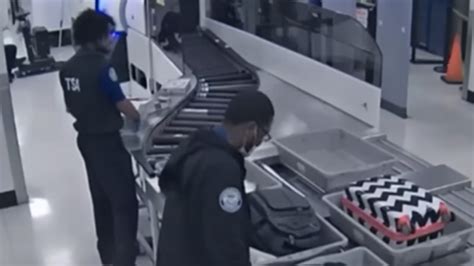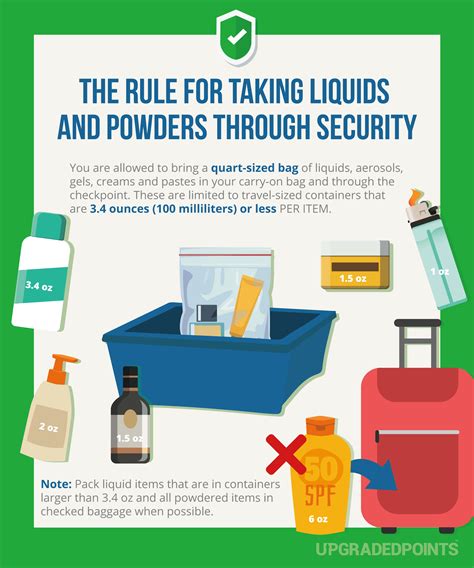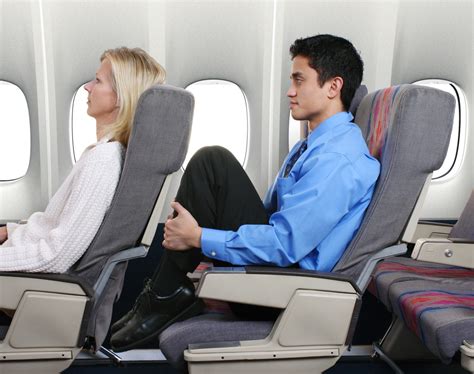
The Transportation Security Administration (TSA) is implementing a new policy prohibiting passengers from concealing undeclared valuables, such as large amounts of cash or precious metals, within their carry-on or checked luggage to avoid security screening and potential tax or reporting obligations. The rule aims to crack down on individuals attempting to bypass regulations related to currency and monetary instrument reporting, potentially linked to illegal activities like money laundering and tax evasion.
Travelers attempting to hide undeclared assets now face potential civil penalties, seizure of the concealed items, and referral to law enforcement agencies for further investigation. The new TSA directive reinforces existing federal regulations requiring individuals to report currency or monetary instruments exceeding $10,000 when entering or leaving the United States. Although there is no limit to how much currency or monetary instruments travelers can bring into or out of the U.S., federal law requires travelers to report transporting $10,000 or more in currency or other monetary instruments to or from the U.S.
TSA spokesperson Lisa Farbstein, in a statement, emphasized that the policy is not intended to target everyday travelers carrying reasonable amounts of currency for legitimate purposes. Instead, it aims to deter individuals who deliberately conceal large sums to evade reporting requirements, “This new rule isn’t about passengers traveling with a reasonable amount of money for their trip. It’s about those who attempt to conceal large amounts of cash or other valuables to avoid detection and potential reporting requirements.”
The change underscores the TSA’s broader efforts to enhance security protocols and combat financial crimes, aligning with national security priorities and interagency collaboration with law enforcement and financial regulatory bodies. The new rule is scheduled to take effect immediately, and travelers are advised to familiarize themselves with the updated guidelines to ensure compliance and avoid potential penalties.
The impetus for this new TSA rule stems from a growing concern about the potential exploitation of air travel for illicit financial activities. While the TSA’s primary mission remains focused on transportation security, the agency also plays a crucial role in supporting efforts to combat money laundering, tax evasion, and other financial crimes. By preventing the concealment of large sums of cash and other valuables, the TSA aims to disrupt these illegal activities and protect the integrity of the financial system.
Background on Currency Reporting Requirements
Federal law requires individuals to report currency or monetary instruments exceeding $10,000 when entering or leaving the United States. This requirement is outlined in the Bank Secrecy Act (BSA), also known as the Currency and Foreign Transactions Reporting Act. The BSA was enacted to combat money laundering and other financial crimes by requiring financial institutions to keep records of cash transactions exceeding certain thresholds and to report suspicious activity.
The reporting requirement applies to both U.S. residents and foreign visitors. When traveling internationally with $10,000 or more in currency or monetary instruments, individuals must file a Report of International Transportation of Currency or Monetary Instruments (FinCEN Form 105) with U.S. Customs and Border Protection (CBP). Failure to comply with this reporting requirement can result in civil penalties, seizure of the unreported currency, and even criminal prosecution.
The term “monetary instruments” includes not only cash but also coins, currency, traveler’s checks, money orders, and negotiable instruments or securities in bearer form. The reporting requirement applies to the aggregate value of all monetary instruments being transported, not just individual items.
TSA’s Role in Enforcing Currency Reporting Requirements
While CBP is primarily responsible for enforcing currency reporting requirements at ports of entry and exit, the TSA plays a supporting role by detecting and preventing the concealment of large sums of cash and other valuables within airports. The TSA’s security screening procedures, including the use of advanced imaging technology and canine units, can help identify individuals attempting to smuggle undeclared assets through airport security checkpoints.
The new TSA policy prohibiting the concealment of valuables is intended to enhance the agency’s ability to detect and deter such activity. By explicitly prohibiting the concealment of valuables, the TSA is sending a clear message that it will not tolerate attempts to evade currency reporting requirements.
Potential Consequences of Violating the New TSA Rule
Travelers who violate the new TSA rule by concealing undeclared valuables face a range of potential consequences, including:
- Civil Penalties: The TSA may impose civil penalties for violations of its security regulations, including the concealment of valuables. The amount of the penalty will depend on the severity of the violation and the individual’s history of compliance.
- Seizure of Concealed Items: The TSA may seize any undeclared valuables that are discovered during security screening. The seized items may be subject to forfeiture proceedings, in which the government seeks to permanently confiscate the assets.
- Referral to Law Enforcement: The TSA may refer cases of suspected currency reporting violations to law enforcement agencies, such as CBP or the Internal Revenue Service (IRS), for further investigation. These agencies may pursue criminal charges against individuals who knowingly violate currency reporting requirements.
Impact on Legitimate Travelers
The TSA emphasizes that the new policy is not intended to target legitimate travelers who are carrying reasonable amounts of currency for lawful purposes. Travelers who are carrying less than $10,000 in currency or monetary instruments are not required to report it to CBP, and they should not be affected by the new TSA rule as long as they are not attempting to conceal the currency.
However, even legitimate travelers may be subject to scrutiny if they are carrying large amounts of cash, particularly if they are traveling to or from countries known for money laundering or other financial crimes. TSA officers may ask travelers about the source and intended use of the currency, and they may conduct additional screening to ensure that the currency is not related to illegal activities.
To avoid potential delays or complications, travelers who are carrying large amounts of cash are advised to:
- Be prepared to explain the source and intended use of the currency.
- Carry documentation to support their explanation, such as bank statements, receipts, or letters of employment.
- Declare the currency to CBP if they are traveling internationally with $10,000 or more.
Industry Reactions and Concerns
The announcement of the new TSA policy has generated mixed reactions from industry stakeholders and privacy advocates. Some experts have praised the TSA for taking steps to combat financial crimes and enhance security, while others have raised concerns about the potential for abuse and the impact on legitimate travelers.
Some privacy advocates have argued that the new policy could lead to unwarranted searches and seizures of travelers’ personal belongings. They have also expressed concern that the TSA may use the policy as a pretext to profile travelers based on their ethnicity, religion, or travel patterns.
In response to these concerns, the TSA has stated that it is committed to implementing the new policy in a fair and non-discriminatory manner. The agency has also emphasized that its officers will be trained to respect travelers’ rights and to avoid unnecessary searches and seizures.
Legal and Constitutional Considerations
The new TSA policy raises several legal and constitutional considerations, including the Fourth Amendment protection against unreasonable searches and seizures. The Fourth Amendment requires law enforcement officers to have a warrant based on probable cause before conducting a search or seizure. However, there are several exceptions to this requirement, including the “border search exception,” which allows CBP officers to conduct searches of individuals and their belongings at ports of entry and exit without a warrant or probable cause.
The TSA argues that its security screening procedures are justified under the “administrative search exception,” which allows government agencies to conduct searches for regulatory purposes without a warrant or probable cause. The Supreme Court has upheld the constitutionality of administrative searches in certain circumstances, such as airport security screenings, as long as the searches are reasonable in scope and are conducted for a legitimate government purpose.
However, the legality of the new TSA policy may be challenged in court if it is determined that the policy is overly broad or that it is being used to conduct searches that are not reasonably related to transportation security.
Impact on the Black Market Peso Exchange (BMPE)
The new TSA rule could potentially disrupt the Black Market Peso Exchange (BMPE), a complex money laundering system used by drug cartels to convert U.S. drug proceeds into Colombian pesos. The BMPE involves the use of shell companies, front businesses, and money brokers to disguise the illicit origin of the funds.
One common method used in the BMPE is to smuggle large amounts of cash from the United States to Mexico or other countries, where it is then used to purchase goods or services that are exported to Colombia. The new TSA policy could make it more difficult for drug cartels to smuggle cash through airports, potentially disrupting the BMPE and other money laundering schemes.
The Future of TSA Security Screening
The new TSA policy is just one example of the agency’s ongoing efforts to enhance security screening procedures and combat financial crimes. In recent years, the TSA has implemented several new technologies and procedures to improve its ability to detect and deter threats to transportation security, including:
- Advanced Imaging Technology (AIT): AIT scanners use radio waves or X-rays to create images of passengers’ bodies, allowing TSA officers to detect concealed weapons and other contraband.
- Explosives Detection Systems (EDS): EDS machines use X-rays or other technologies to detect explosives in checked baggage and cargo.
- Canine Units: TSA canine units are trained to detect explosives and other contraband.
- Behavior Detection Officers (BDOs): BDOs are trained to identify suspicious behavior that may indicate a threat to transportation security.
The TSA is also exploring new technologies and procedures to improve the efficiency and effectiveness of security screening, such as biometric identification systems and artificial intelligence. These advancements aim to streamline the screening process while maintaining a high level of security.
Expanding the Scope: Other Valuables
While the initial focus of the TSA’s announcement was on cash, the term “valuables” extends beyond currency. Precious metals like gold, silver, and platinum, along with jewelry, negotiable instruments (stocks, bonds), and high-value collectibles could fall under the purview of the new regulation. This broader interpretation means travelers with significant assets of these kinds should exercise caution and transparency. The specific valuation threshold, if any, that triggers scrutiny beyond currency, hasn’t been explicitly defined but the TSA’s language indicates a focus on “large amounts.”
Interagency Cooperation and Information Sharing
The success of this new policy hinges on effective interagency cooperation. The TSA collaborates with other federal agencies, including CBP, the IRS, the Financial Crimes Enforcement Network (FinCEN), and the Department of Justice (DOJ), to share information and coordinate enforcement efforts. This collaboration is essential for identifying and prosecuting individuals involved in money laundering, tax evasion, and other financial crimes. FinCEN Form 105, the Report of International Transportation of Currency or Monetary Instruments, is a critical document in this process, allowing different agencies to track and analyze cross-border movements of currency and monetary instruments.
Global Context: International Anti-Money Laundering Efforts
The TSA’s new policy aligns with broader international efforts to combat money laundering and terrorist financing. The Financial Action Task Force (FATF), an intergovernmental organization, sets international standards for combating money laundering and terrorist financing. Many countries have implemented laws and regulations similar to the Bank Secrecy Act to comply with FATF recommendations.
The new TSA policy reflects a growing recognition of the importance of preventing the use of the air transportation system for illicit financial activities. By working with other countries and international organizations, the United States can help to create a global network of cooperation to combat money laundering and other financial crimes.
The Rule’s Practical Implementation: Challenges and Considerations
The practical implementation of the new TSA rule presents several challenges. Defining what constitutes “concealment” can be subjective. Is packing cash within socks at the bottom of a suitcase concealment, or simply poor packing? Training TSA officers to differentiate between innocent packing habits and intentional concealment is crucial. Moreover, the TSA must ensure that its officers do not engage in racial or ethnic profiling when enforcing the new policy. Consistent and equitable enforcement is essential to maintain public trust and avoid legal challenges. Another challenge is the potential for increased delays at security checkpoints. Heightened scrutiny of luggage suspected of containing concealed valuables could slow down the screening process and lead to longer wait times for travelers.
Long-Term Implications and Future Developments
The long-term implications of the new TSA policy are still uncertain. It is possible that the policy will deter some individuals from attempting to smuggle undeclared valuables through airports. However, it is also possible that individuals will find new ways to evade detection. The TSA will need to continuously monitor the effectiveness of the policy and adapt its procedures as necessary to stay ahead of evolving threats. Future developments could include the use of more advanced technology to detect concealed valuables, as well as enhanced training for TSA officers. The agency may also need to work with other countries to harmonize currency reporting requirements and enforcement efforts.
The TSA’s recent announcement underscores the evolving role of security agencies in combating financial crimes and protecting national interests. By adapting to new threats and collaborating with domestic and international partners, the TSA seeks to maintain the integrity of the air transportation system and safeguard the U.S. financial system from abuse. The impact of this policy will depend heavily on its fair, consistent, and effective implementation, as well as its adaptability to changing circumstances and emerging threats.
FAQ Section
1. What exactly does the new TSA rule prohibit?
The new TSA rule prohibits passengers from concealing undeclared valuables, such as large amounts of cash or precious metals, within their carry-on or checked luggage with the intent to avoid security screening and potential reporting obligations under federal law. It’s aimed at deterring individuals from evading currency reporting requirements and potentially engaging in illegal activities.
2. Does this mean I can’t travel with cash anymore? Is there a limit to how much I can carry?
No, you can still travel with cash. There is no limit to the amount of currency or monetary instruments you can bring into or out of the U.S. However, federal law requires you to report transporting $10,000 or more in currency or other monetary instruments to or from the U.S. by filing a Report of International Transportation of Currency or Monetary Instruments (FinCEN Form 105) with U.S. Customs and Border Protection (CBP). The TSA rule is focused on preventing intentional concealment to evade reporting.
3. What happens if I violate this new TSA rule? What are the penalties?
If you violate the new TSA rule by concealing undeclared valuables, you could face civil penalties, seizure of the concealed items, and referral to law enforcement agencies for further investigation. The penalties will depend on the severity of the violation and your history of compliance. Criminal prosecution is also possible in cases of intentional evasion of currency reporting requirements.
4. What should I do if I am traveling with more than $10,000 in cash?
If you are traveling internationally with $10,000 or more in currency or monetary instruments, you must declare it to U.S. Customs and Border Protection (CBP) by filing FinCEN Form 105. You can obtain this form at the port of entry or exit. It’s advisable to also carry documentation to support the source and intended use of the currency, such as bank statements or receipts. This can help avoid potential delays or complications during security screening.
5. Besides cash, what other items are considered “valuables” under this new rule?
While the TSA’s initial focus was on cash, the term “valuables” can extend to other items such as precious metals (gold, silver, platinum), jewelry, negotiable instruments (stocks, bonds), and high-value collectibles. The specific criteria that define a “large amount” of these items are not explicitly defined, but the rule targets attempts to conceal significant assets with the intent to evade reporting requirements.








